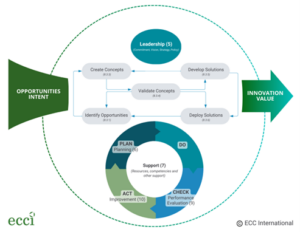Photo courtesy of mentatdgt via Pexels. Creative Commons.
Regardless of the nature of your business, there is no denying that change is the only constant thing in the world. Failing to move with the times could be detrimental to your organization.
However, it is also inevitable to encounter resistance when implementing changes in your business. That said, we have listed down eight steps on how you can establish a change management process:
Step 1: Determine Your Objectives
To ease the implementation of organizational change management, it is important that you know where your organization currently stands and where you want to be.
Hence, it is important that you determine and specifically define your objectives. Doing so will make it easy for you to get everyone in your business to be on-board.
Just make sure that the change you want to implement is inline with your business’s mission and core values. That said, you should revisit these aspects of your organization when working on the radical change that you want to implement.
Step 2: Get Your Team on Board
Once you have identified why you want to implement change within your business, the next step is to sell this idea to your management team.
However, you cannot do it through pep talk alone. It is important that you communicate with them about opportunities that come with the change, as well as its possible threats. This allows you to explore the aspects of organizational change process management and then ask for input.
Who knows? The suggestions from other members of your management team can be an eye-opener.
Step 3: Identify Influential Employees
Here’s the thing: Your managers are less likely to implement process improvement throughout your business.
You will need to identify influential employees on every level of your organization. They will be your “change champions” who will serve as a middle-man between the rest of the business and the management.
These people will also be the ones asking for a commitment from their colleagues. As a result, it will be easier for you to get all of your employees to your side. Just remember to be honest as to why you need everyone’s support.
Step 4: Formulate a Vision
Your change model is what can compel everyone in your business to take action. So, the bigger and more drastic the change that you need to implement, the more compelling your vision must be.
But just like with your management team, you cannot compel people to welcome change if you do not communicate your vision with them. This is one way to overcome resistance to change.
However, this should be two-way communication. If your employees voice out their concerns, you should listen carefully and address them promptly.
Their concern might be genuine, and it is something that you forgot to consider.
Step 5: Remove the Stumbling Blocks
In relation to the previous steps for change management process, possible threats and your people’s concern can be a stumbling block on implementing change within your business.
That said, it is important that you identify those stumbling blocks and find ways on how you can eliminate them. When we say “eliminate,” though, we mean that you should address it properly and promptly.
If implementing the change would mean requiring your employees to learn a new skill set, then, by all means, provide them with the proper training.
Step 6: Set Easy-to-Achieve Milestones
Implementing business process improvement serves a goal. However, it can be far away and challenging during the early stages of your change management process.
That said, it would be ideal to break it down into easy-to-achieve milestones.
For one, it can help you track your organization’s process. Second, it also helps you monitor whether the change that you are implementing is making you a step closer to your overall business goals.
Last but not least, an easy-to-achieve milestone will make the change less overwhelming to your employees.

Step 7: Aim for Quick-Wins
In relation to step #8, another way to make the change management steps less overwhelming is by aiming for quick wins. That way, your employees will not be discouraged. Not to mention that being able to achieve quick wins can show the naysayers that your plan is working.
So, if you want to implement new technology within your business, that would mean that your employees might need to develop a new skill set. One of the quick wins that you can aim is setting a training schedule.
Step 8: Monitor for Progress
Of course, the best way to implement the change is to monitor its progress.
Change management, as a whole, is a process. Meaning it requires planning, organizing, leading, and monitoring. Business process management is a cycle that allows you to identify what is working and what’s not.
Here’s the thing: Just because you were able to implement change does not mean that it is the end of the journey. You have to make sure that it is incorporated within your company culture.
It can be challenging to make changes stick. Hence, you will need someone who can help you adapt to the change management process. This is where ECCI comes in. They can assist you in structuring long-term, proactive, and responsible approach, which can prepare your business for any disruptive incidents.








